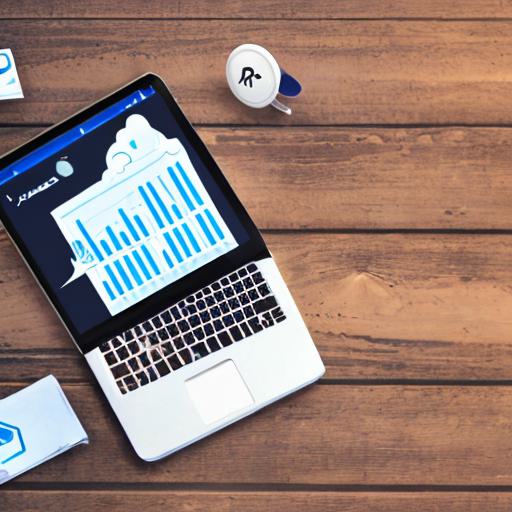AB testing , also known as split testing, is a powerful technique used to increase the performance of websites and digital marketing. It has become an essential tool for businesses looking to increase their online presence and increase conversions. In this article, we will explore the benefits of AB testing, how it works, the different types of AB testing, setting up an AB testing experience, common mistakes, AB testing tools, and best practices for successful AB testing .
Introduction to AB Testing
AB testing is a method used to compare two different versions of a web page or ad campaign to determine which performs better in order to improve user experience, conversion rates, or other metrics. key performance indicators (KPIs). The process involves dividing your audience into two groups at random and showing each group a different version of your content. By comparing the results, you can determine which version performs better and optimize your content accordingly.
Benefits of AB Testing
AB testing offers many benefits to businesses looking to increase their online presence. First, it helps increase conversions, which is essential for generating revenue, leads, and growing your business. By optimizing your content to meet the needs of your audience, you can improve your conversion rates and ultimately increase your revenue and have a good return on investment. AB testing also reduces bounce rates and optimizes user experience, which is essential for building a loyal customer base.
Second, AB testing helps to optimize the user experience. By testing different versions of your content, you can identify the most effective elements to attract your target prospects and meet their needs. This can lead to improvements in web page navigation, content presentation, and overall user experience.
Finally, AB testing enables decision-making based on data. Instead of making assumptions about what works best for your audience, you can use real data to make informed decisions about your content and digital marketing strategies. It can help you save time and money by focusing your efforts on what really works.
How does AB Testing work?
AB testing involves dividing your audience into two groups at random and showing each group a different version of your content. For example, you can create two different versions of a landing page, one with a green button and one with a red button. Half of your prospects will see the version with the green button, while the other half will see the version with the red button. By measuring the conversion rates of each version, you can determine which performs better.
To get accurate results, it is important to test only one variable at a time. In the example above, you are only testing the color of the button, not its text or any other landing page element. This allows you to isolate the effect of the variable you are testing and accurately measure its impact on user engagement and conversion rates.
The different types of AB Testing: One hypothesis, a thousand possibilities
There are many types of AB testing, each with their own advantages and challenges. One of the most common types is single hypothesis testing, which involves testing only one hypothesis at a time. This approach is useful for identifying the impact of a specific variable on user engagement and conversion rates.
Another type of AB test is multi-hypothesis testing , which involves testing multiple hypotheses at the same time. This approach is useful for identifying the impact of multiple variables on user engagement and conversion rates, but can be more difficult to set up and analyze.
Finally, there’s sequential testing, which involves testing multiple variations of your content over time to identify the most effective combination of variables. This approach is useful for optimizing your content over the long term and increasing the overall presence rate of your prospects online.
Setting up an AB Testing experience
To set up an AB testing experience, you will need to follow several key steps. First, you need to identify the variables you want to test. This can range from button color to layout to email subject lines.
Once you have identified your variables, you should create two different versions of your content, each with a different variation of the variable you are testing. For example, if you are testing button color, you can create one version of your landing page with a green button and another version with a red button.
Next, you’ll need to randomly divide your audience into two groups and show each group a different version of your content. To do this, you can use various tools, such as Google Optimize or Optimizely.
Once the experiment has started, you will need to measure and analyze the results. It’s about tracking user engagement and conversion rates for each version of your content and comparing the results to see which performs better.
Choice of variables to test
Choosing the right variables to test is essential to the success of an AB testing experience. Here are some tips to help you choose the right variables to test:
- Focus on variables that can have a significant impact on user engagement and conversion rates.
- Only test one variable at a time to get accurate results.
- Consider the potential impact of your variables on user experience and overall website performance.
- Use data from previous experiences and user feedback to inform your choices.
Measure and analyze results
Measuring and analyzing the results of your AB testing experience is key to determining which version of your content is performing the best. Here are some tips to help you measure and analyze your results:
- Use a tool like Google Analytics to track user engagement and conversion rates for each version of your content.
- Set conversion goals to track specific actions users take, like making a purchase or filling out a form.
- Use statistical analysis to determine if the results of your experiment are statistically significant.
- Consider the potential impact of external factors, such as changes in traffic or user behavior, on your results.
Common AB Testing Mistakes
AB testing can be a powerful tool for increasing online presence, but it’s important to avoid common mistakes that can hurt your results. Here are some common mistakes to avoid:
- Testing too many variables at once, which can make it difficult to isolate the impact of each variable.
- Not collecting enough data to ensure accurate results.
- Not taking into account the impact of external factors on the results.
- Relying too heavily on statistical significance without considering the practical impact of your results.
Tools for AB testing
There are many different tools for AB testing, each with their own unique features and benefits. Here are some popular tools to consider:
- Google Optimize: a free tool that allows you to create and test variations of your web page.
- Optimizely: a comprehensive AB testing tool that offers a wide range of features, including multivariate testing and personalization.
- VWO: A user-friendly AB testing tool that offers a range of features including heatmaps and visitor recordings.
- Unbounce: A landing page builder that includes AB testing functionality.
How to do A/B tests without penalizing your SEO?
AB testing can be a powerful tool to improve your online presence, but it’s important to avoid penalties from search engines like Google. Here are some tips to help you avoid penalizing your SEO:
- Use rel=”canonical” tags to indicate the original version of your content.
- Use noindex tags to prevent search engines from indexing your test pages.
- Avoid cloaking, which is presenting different content to search engines and users.
- Test small changes first to minimize the impact on your SEO.
Best Practices for Successful AB Testing
To ensure the success of your AB testing experiments, it is important to follow best practices. Here are some tips to help you get the most out of your AB testing:
- Set clear goals and objectives for each experiment.
- Test one variable at a time to get accurate results.
- Collect enough data to ensure statistical significance.
- Consider the impact of external factors on your results.
- Use data from previous experiences and user feedback to inform your choices.
- Continuously optimize your content based on your results.
Conclusion
AB testing is a powerful tool for businesses looking to increase their online presence and increase conversions. By testing different versions of your content and analyzing the results, you can make data-driven decisions about your webpage and digital marketing strategy. By following best practices and avoiding common mistakes, you can maximize the impact of your AB testing experiences and achieve your goals.
What is A/B testing and how does it work?
What are the benefits of A/B testing for businesses?
How to choose the elements to test during an A/B testing campaign?
How long does it take to run an effective A/B testing campaign?
How to interpret the results of an A/B testing campaign?
How to set up an effective A/B testing campaign?











